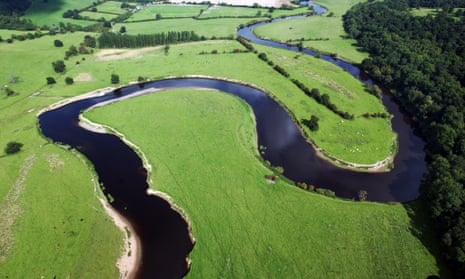Of the many weird and wonderful facts about pi, one of my favourites is a surprising connection between the number 3.14 and the world around us.
It’s about rivers. Or more precisely, the bendiness of rivers.
As you will know, some rivers are relatively straight while other rivers twist and turn across the landscape like the scribble of someone checking if their pen is dry.
You can measure how “bendy” a river is by measuring its total length and dividing by straight route from its source to mouth, this measure is called “sinuosity”. So a totally straight river would have a sinuosity of 1, while very bendy rivers can have very high sinuosity, with no limit to how high it can go.
Yet, it is claimed the average sinuosity of rivers around the world is pi.
This is an incredible fact, and if true means that rivers are typically a little over three times longer than the direct route from source to mouth. Of course some rivers are straighter, and some rivers are longer, but the average sinuosity is around 3.14.
The result was first published in Science, dated 22 March 1996 (eight days after that year’s Pi Day – gutted). In a paper titled River Meandering as a Self-Organization Process, Hans-Henrik Stølum, used empirical data and simulation to study the chaotic behaviour of a river’s form over time, noting that the value of sinuosity tended to oscillate between a low-value of 2.7 and a high-value of 3.5, but with an average sinuosity of 3.14.
Stølum justified this result using fractal geometry. This is the idea that if the bends of a river can be approximated by arcs of circles, and the little wiggles of a river by arcs of smaller circles, then the sinuosity of the river can be calculated to be pi.
I was fascinated by this paper and last year presented a Numberphile video about it:
In the video you may notice that I was hesitant to state that the average sinuosity was truly pi in the real world. I suspected that the restrictions of geography would prevent it, but I didn’t have the data to decide either way.
Viewer Laurence Roberts got in touch and suggested he build a website to crowdsource the data. PiMeARiver.com allows you to enter the coordinates of the mouth and the source of a river, and the length of the river, information that can be got from Google Maps and Wikipedia. It is then an easy task to calculate the sinuosity of these rivers.
Some rivers are relatively straight, such as the Sacramento river in California, which is 447 miles long but with a sinuosity of 1.24, showing it has relatively few twists and turns. On the other hand, the river Liffey is only 75 miles long yet its sinuosity is a staggering 5.88 – it meanders through Dublin like the walk of the many stag parties that passes through the city.
After 258 rivers, the average sinuosity is 1.94.
Damn, not pi!
The close distribution of the data is more evidence that the average sinuosity of rivers is around 1.94.
Should I be disappointed? The argument that a river is really just a number of arcs, and the idea that this is somehow fractal in nature, in that it repeats on a smaller scale, still feels sound.
Bends in rivers are caused by erosion. As the water moves faster on the outside of a bend more erosion occurs, while soil deposits on the inside of a bend. This causes bends in rivers to become increasing more wild, increasing its sinuosity – until the bend becomes so extreme that the water can take a shortcut, cutting of the bend and forming an oxbow lake.
The formation of an oxbow lake results in that section of the river suddenly becoming straight, lowering sinuosity. So it is erosion and the formation of oxbow lakes that are the two driving forces behind a river’s sinuosity. Over time this results in rivers behaving chaotically, with the value of sinuosity oscillating between high and low values. It was while studying this chaotic behaviour that Stølum first noticed the value of pi.
If the true value of average river sinuosity is smaller than pi, maybe we need to consider another mathematical constant? Like the golden ratio, aka phi, which is also found in the fractal behaviour of nature. Its value is 1.618, lower than our result…but then, if we consider pi/phi we get 1.94. Coincidence, or something more?
Help us by submitting a river of your own to pimeariver.com
If you want to be kept in touch with this blog, Adventures in Numberland please follow Alex Bellos on Twitter, Facebook or Google+.



